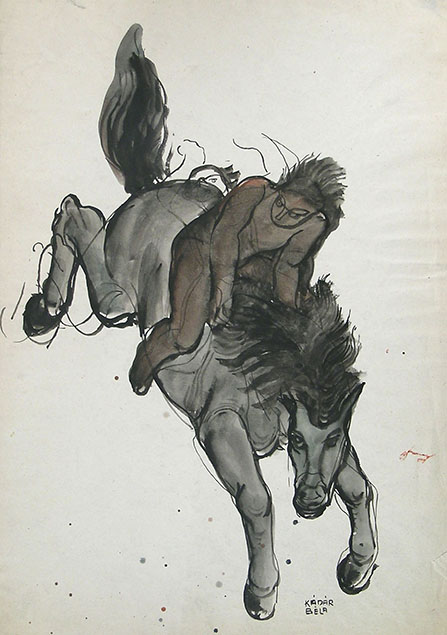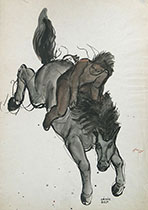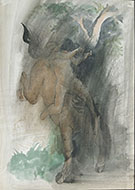(Budapest 1877 - 1956 )
A HORSEMAN
Watercolour, signed KADAR / BELA; on the verso, another version of the same subject; 420 x 295 mm.
Bela Kadar was born into a working-class Jewish family and, due to his father’s early death, was apprenticed as an iron-turner after completing only six years in primary school. He eventually began his career as an artist by painting murals in Budapest. In the wake of the First World War however, and its tragic political outcomes, the promising process that could have made modern art take root in Hungary was interrupted for a long while. Though not initially persecuted politically, Kadar, due to his leftist commitments, found himself in a void in Budapest; Having already made two pilgrimages to Paris and Berlin by 1910, he was keen to appear on international testing grounds, both existentially and professionally and by 1918 he had left his family behind to try himself in Western Europe. Kadar’s first important exhibition came in October 1923 at Herwarth Walden’s gallery Der Sturm, in Berlin. During the course of the Berlin years, Kadar’s earlier expressionist style changed: the emotionally charged and powerful graphic tone that characterized his work before the 1920s was replaced by a more romantic mood. Elements of folk tale and fantasy gained prominence whilst his subject matter became more narrative. Influenced by the German Expressionist artists and Der Blaue Reiter, Kadar depicted rustic village scenes within primary compositions. His surrealistic dream imagery is more akin to Marc Chagall’s compositions however. Kadar adopted in his work a remarkable number of international trends, including Cubism, Futurism, Neo-Primitivism, Constructivism, and the Metaphysical School.



